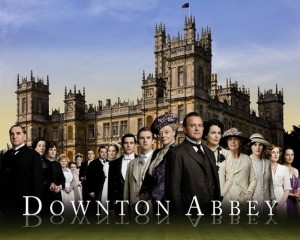 I’m a great fan of Downton Abbey and have faithfully watched each season. In fact, at this year’s Washington Romance Writers Retreat in April, I’m going to do a workshop on what Downton Abbey can teach us about writing Historical Romance. You’ll be hearing more on that later.
I’m a great fan of Downton Abbey and have faithfully watched each season. In fact, at this year’s Washington Romance Writers Retreat in April, I’m going to do a workshop on what Downton Abbey can teach us about writing Historical Romance. You’ll be hearing more on that later.
This week’s episode featured more on one of my favorite characters, Thomas, finely acted by Rob James-Collier. (Don’t worry, though. I won’t give any spoilers in case you haven’t seen it yet)
 In season one, Thomas was a scheming footman who would manipulate anyone to put himself in a good light. He’d get the dirt on the other servants and use the information against them, if he thought it would serve his own ends. He had it in for Mr. Bates from the beginning, never missing an opportunity to make Bates look bad. He even put the moves on one of the handsome houseguests, the foreign royal who seduced Mary and dropped dead in her bed.
In season one, Thomas was a scheming footman who would manipulate anyone to put himself in a good light. He’d get the dirt on the other servants and use the information against them, if he thought it would serve his own ends. He had it in for Mr. Bates from the beginning, never missing an opportunity to make Bates look bad. He even put the moves on one of the handsome houseguests, the foreign royal who seduced Mary and dropped dead in her bed.
In other words, Thomas was a villain. Along with O’Brien, Lady Grantham’s ladies maid, Thomas was the character we were supposed to hate, the quintessential bad guy.
In season two, though, something changed. Thomas went from being a character I loved to hate to someone more complicated. By the end of the season he was one of my favorite characters and still is.
If you want to make a villain sympathetic, this is how to do it.
Motivate him
In season two it became clearer that Thomas was a lonely man who wanted better for himself and who really had nobody who cared about him and no opportunities to aspire to more than service in an country house. I suddenly understood why he connived and clawed his way in life. When he is duped in his profiteering scheme and he loses everything, he has to go back into service. By this time you know what a difficult thing that is for him.
Make him vulnerable
In season two we saw a different side of Thomas from the smart-talking conniver. He went to war and was terribly traumatized by battle, so much so he lifted his hand out of the trenches and waits for it to be shot. That fear and desperation touched my heart.
Show his pain
Also in season two Thomas fell in love with an injured soldier who he tried to nurse back to health. His kindness and sympathy towards this man was unexpected, but showed that he, too, could have feelings for another person. When the soldier killed himself, Thomas was shattered. In season three he also breaks down into tears when Sybil dies, telling Anna, “There are few people in my life who’ve been kind to me. She was one of them.”
Now I know what makes Thomas who he is and I can see beyond his scheming facade. That is the trick to making a good villain. Show who he is, why he is the way he is, and show something of his humanity. If you do it right, you can even make the villain a character I can love.
Do you have a favorite villain? Why is he or she a favorite?
Are you watching Downton Abbey?
I’ll be selecting Anne Gracie’s winner at midnight tonight, so there’s still time to leave a comment for a chance to win a copy of The Autumn Bride.










